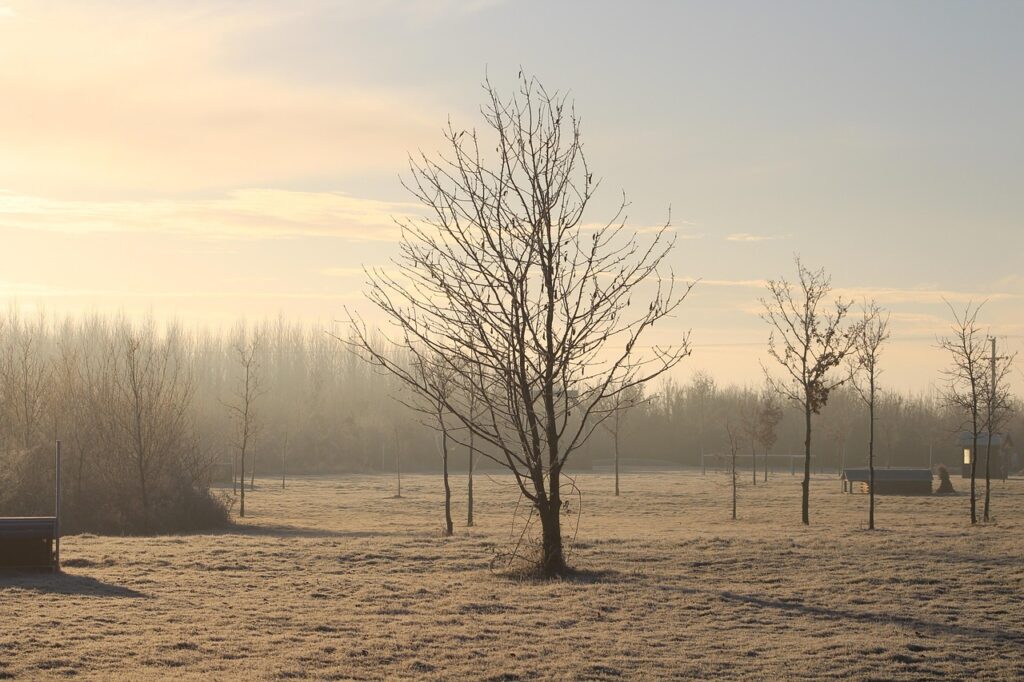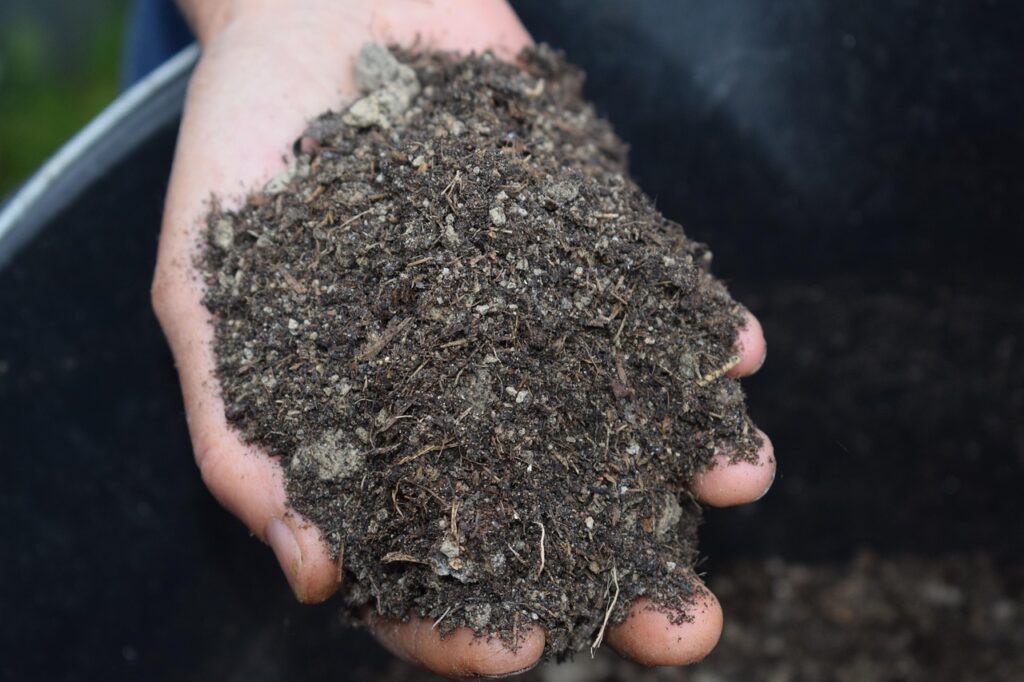
Get a quick no obligation quote It’s free and will only take a jiffy!
How to Protect Young Trees from Weather Extremes
Planting young trees is an investment in the future, but in its early years, a tree is far more vulnerable to the elements than a well-established one.
Unlike mature trees with deep roots and strong, resilient branches, saplings have yet to develop the strength needed to withstand extreme weather conditions. Without the right care, they can suffer from stress, damage, or even fail to thrive.
In the UK, unpredictable weather patterns can pose a significant threat to young trees. Sudden frosts can damage tender shoots, heatwaves may cause dehydration, storms can snap fragile branches, and prolonged drought can weaken a tree’s ability to grow.
These challenges make it essential for tree owners to take proactive steps to protect young trees from the elements.
With the right approach – such as proper mulching, staking, and seasonal care – you can give your trees the best chance of growing into strong, healthy specimens that will thrive for years to come.
In this guide, we’ll explore how to safeguard young trees against the UK’s varying weather conditions, ensuring they get the best possible start in life.
Why do young trees need extra protection?
Young trees are far more vulnerable to the elements than their mature counterparts, and without the right care, they can struggle to establish themselves.
One of the biggest reasons for this is their shallow root systems. Unlike older trees, which have deep, well-developed roots that anchor them securely and allow them to access water from deep underground, saplings rely on surface moisture. This makes them far more susceptible to drought and strong winds, which can loosen their grip on the soil.
Another factor is thin bark, which offers little defence against harsh weather conditions. Mature trees develop tough outer bark that helps protect them from extreme temperatures, but young trees do not yet have this natural barrier.
This makes them particularly vulnerable to frost damage, which can cause cracks in the bark, and sun scorch, which can dry out and weaken their structure.
If left unprotected, extreme weather can have long-lasting effects on young trees. Strong winds or heavy storms can snap fragile branches, while prolonged drought can cause dehydration, leading to wilting or even death.
Even if a tree survives harsh conditions, exposure to extreme weather can stunt growth and weaken its overall resilience, leaving it more prone to disease and pest infestations.
Providing extra protection in a tree’s early years can make all the difference in ensuring it grows strong and healthy. By understanding the risks and taking preventative measures, tree owners can help young trees establish themselves and thrive for decades to come.
How to protect young trees from frost and cold weather?
Cold weather, particularly frost, can be one of the biggest threats to young trees, causing damage to their delicate bark and root systems. However, with the right precautions, it is possible to shield them from the worst of the winter chill.
One of the best ways to protect a tree from freezing temperatures is mulching.
Applying a thick layer of organic mulch, such as wood chips or leaf mould, around the base of the tree helps to insulate the roots, keeping them warm and reducing the risk of frost damage.
Mulch also helps retain moisture, preventing the soil from drying out in cold, windy conditions. It is important to leave a small gap around the trunk to prevent rot and discourage pests.
For added protection, tree owners can wrap young tree trunks with tree guards or fleece.
Tree guards – made from plastic or spiral tubing – can help insulate the bark and protect against sudden temperature drops.
In particularly harsh winters, horticultural fleece or burlap can be loosely wrapped around the trunk and lower branches to provide an extra layer of warmth. These materials should be removed in the daytime to allow airflow and prevent excessive moisture build-up.
Another key factor in frost protection is choosing the right planting time. Newly planted trees are especially vulnerable to cold weather, so planting in early autumn or spring gives them time to establish roots before winter sets in.
If planting in autumn, it’s best to do so before the first frosts arrive, allowing the tree to settle in before temperatures drop.
By taking these steps, young trees can be better equipped to withstand winter conditions and continue growing strong when the warmer months return.
How to shield young trees from strong winds and storms?
High winds and storms can be particularly harsh on young trees, which have not yet developed strong root systems or sturdy trunks. Without proper protection, they risk being uprooted, snapped, or severely damaged.
Fortunately, there are several ways to help saplings withstand extreme weather.
Staking for stability
One of the most effective ways to protect young trees from strong winds is staking. Staking provides much-needed support and stability, helping trees stay upright while their roots establish. However, it is important to do this correctly, as over-reliance on stakes can lead to weak trunks.
- Use flexible ties to secure the tree to the stake, allowing some natural movement to encourage trunk strength.
- Stakes should be positioned at an angle and placed outside the root ball to avoid damaging the roots.
- Remove the stake after one to two growing seasons to ensure the tree does not become dependent on it.
Using shelter and windbreaks
If possible, young trees should be planted in naturally sheltered locations, such as close to fences, walls, or larger trees that can help block strong winds. However, in exposed areas, windbreaks can be used to provide protection.
- A temporary windbreak, such as hessian, mesh netting, or wooden panels, can be placed upwind of the tree to reduce wind impact.
- Planting hardy shrubs or hedges nearby can create a more long-term natural barrier.
Tree pruning for strength and structure
Proper tree pruning is essential in the early years of a tree’s life to develop a strong framework that can withstand storms.
Young trees should be pruned to:
- Remove weak, damaged, or crossing branches to prevent breakage.
- Encourage a well-balanced shape, reducing the risk of wind catching the tree and causing instability.
- Maintain a strong central leader (the main upward-growing stem) to promote healthy vertical growth.
By staking correctly, creating shelter, and pruning for strength, young trees will be far better prepared to withstand storms and high winds, ensuring their long-term survival.
How to prevent heat stress and drought damage?
During hot spells, young trees are particularly vulnerable to heat stress and dehydration, as their root systems are still developing and struggle to access deeper moisture reserves.
Without proper care, prolonged heat and drought can cause wilting, leaf scorch, and even tree death.
Here are some key ways to help young trees survive dry conditions.
Watering techniques for strong root growth
Effective watering methods can make all the difference in helping young trees establish deep, drought-resistant roots. Rather than frequent light watering, which encourages shallow root growth, it is best to adopt a deep but infrequent approach.
- Water once or twice a week during dry spells, ensuring moisture reaches at least 30cm (12 inches) deep.
- Use a slow-release method, such as a soaker hose or a watering bag, to allow water to seep into the soil gradually.
- Water early in the morning or late in the evening to minimise evaporation.
Applying mulch to conserve moisture
Mulching is a simple yet highly effective way to protect young trees from heat stress. A layer of mulch helps retain soil moisture, regulate soil temperature, and reduce competition from weeds.
- Apply a 5–10cm (2–4 inch) layer of organic mulch (such as wood chips, bark, or compost) around the base of the tree.
- Keep mulch a few centimetres away from the trunk to prevent rot and pest issues.
- Replenish mulch as needed, particularly after heavy rain or strong winds.
Providing temporary shade in heatwaves
During extreme heat, young trees can suffer from leaf scorch and sun damage. Providing temporary shade can help reduce heat stress and prevent excessive moisture loss.
Use shade cloth, hessian, or garden fleece to create a simple barrier from direct sunlight.
Position potted plants, garden furniture, or other objects to cast shade on the tree during the hottest part of the day.
Avoid planting young trees in direct sun at the height of summer, opting for autumn or early spring instead.
By combining deep watering, mulching, and temporary shading, young trees can better withstand heatwaves and drought, giving them the best chance to grow strong and healthy.
What are some general year-round protection tips?
Caring for young trees is not just about reacting to extreme weather. It requires consistent, year-round attention to help them grow strong and resilient.
By taking proactive tree care steps throughout the seasons, you can prevent damage, identify potential problems early, and ensure long-term tree health.
Regular inspections for damage or signs of stress
Look out for:
- Wilting or discoloured leaves, which may indicate heat stress, overwatering, or disease.
- Cracks in the bark, which can result from frost damage or rapid temperature changes.
- Unstable growth, where a tree leans excessively or sways too much in the wind, suggesting weak roots or poor staking.
- Pest infestations, such as aphids, caterpillars, or fungal growth, which can weaken young trees.
By checking trees at least once a month, you can catch problems early and adjust care as needed.
Ensuring good soil health to support resilience
Healthy soil is the foundation of a strong tree. Poor soil quality can make young trees more vulnerable to weather extremes and stunt their growth.
To maintain nutrient-rich, well-draining soil:
- Add organic matter like compost or well-rotted manure to improve fertility.
- Avoid compacting the soil around the base of the tree, as this can restrict root growth and water absorption.
- Test soil pH and nutrient levels periodically to ensure the right balance for optimal growth.
A healthy root system gives trees a better chance of surviving harsh weather conditions.
Adjusting care in line with seasonal changes
Trees have different maintenance needs in each season, and adjusting care accordingly helps them stay strong year-round:
- Winter – Protect against frost by mulching and using tree wraps.
- Spring – Inspect for winter damage, pests, and new growth. Prune only when necessary.
- Summer – Focus on watering and heat protection, particularly during droughts.
- Autumn – Clear fallen leaves to reduce fungal risks, and prepare trees for winter by applying fresh mulch.
By adapting your approach to suit the season, you can ensure young trees remain healthy and resilient, whatever the weather brings.

Need professional help giving your young trees the best start?
Protecting young trees from weather extremes is essential to ensuring their long-term health and stability.
From shielding against frost and wind to preventing heat stress and maintaining soil health, consistent care will help your trees develop strong roots and sturdy structures.
If you need expert advice on how to care for newly planted trees or protect them from the elements, TH Trees Ltd is here to help. Our experienced tree surgeons can assess your trees, recommend the best protection methods, and ensure they thrive in all seasons.
Contact TH Trees Ltd today for professional tree care services and tailored advice on keeping your young trees healthy and resilient.
Had a fallen tree in the early hours of Monday morning, called for quote and the team had it cleared on the same day. Really good communication when the lads were onsite and did a great job. Lots of pride in their work shown with the thorough clear up. Would thoroughly recommend.
Thank you Stuart for your kind review. We were glad to be able to help you with your fallen tree. If there's anything else you need in the future, please don't hesitate to get in touch.










